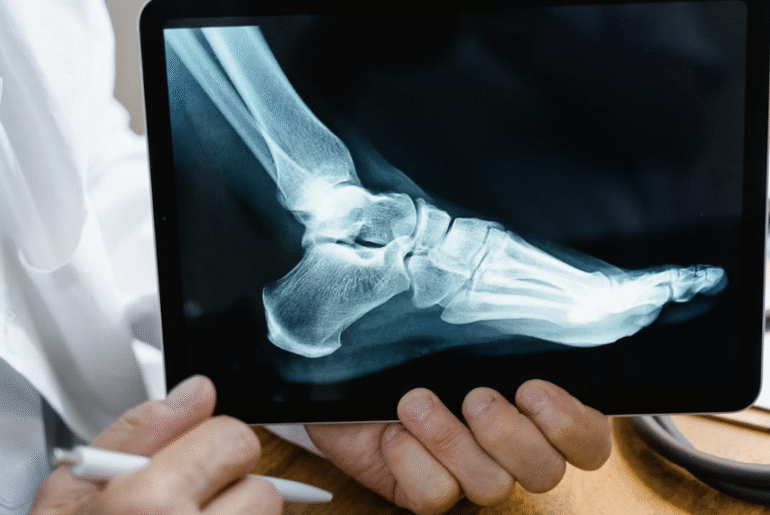This article may contain references to products or services from one or more of our advertisers or partners. We may receive compensation when you click on links to those products or services. Nonetheless, our opinions are our own.
The information presented in this article is accurate to the best of our knowledge at the time of publication. However, information is subject to change, and no guarantees are made about the continued accuracy or completeness of this content after its publication date.
Accidents happen all the time. However, some could leave not just physical and emotional scars but also a heavy financial burden. If you’ve been injured in one, you will have to face hefty medical bills on top of losing income and even employment, leaving you in an uncertain position. A full recovery will only be possible when you have recovered your financial means, especially if an accident has left you disabled and affected your overall well-being.
It’s a good thing that under personal injury laws, you are entitled to demand compensation if the accident is someone else’s fault. From car crashes to slip-and-fall accidents, you have the right to demand compensation from a liable party. You may be entitled to a large amount relative to the severity of your injuries and losses.
However, reaching that point is far from simple, considering the other side could always undervalue your claim and insist on a lesser computation. It pays to be equipped with the right knowledge, so the guide below should give you a quick rundown of everything you need to know to make the most of the process.
Understanding Personal Injury Claims
Before we get into understanding how to maximize your personal injury compensation, it’s important to talk about a few basic facts. Personal injury, in legal terms, is any form of injury inflicted on one party and caused by the negligent actions of another. In certain situations, people and even institutions are bound by a duty of care, which simply means that they are responsible for the safety of others.
Car collisions are the best example of cases within the domain of personal injury law, mainly because motorists are expected to keep others safe. Likewise, a surgeon who botched an operation leading to life-altering injuries can be held liable for medical malpractice, which is also covered under personal injury.
On the other hand, there are cases when a duty of care is assumed, but further investigation is still needed to confirm fault. If you slipped on a banana peel near a business establishment, it’s possible that the business owner might not have known about it and took action.
No matter the case, demanding compensation is warranted when the injuries you sustained have reduced the quality of your life and led to mounting financial hardship. Even when no one is at fault, you can still be paid a fair compensation amount covered by insurance companies. However, this will largely depend on how well you follow set procedures..
Voted "Best Overall Budgeting App" by Forbes and WSJ
Monarch Money helps you budget, track spending, set goals, and plan your financial future—all in one app.
Get 50% OFF your first year with code MONARCHVIP
Steps for Launching a Successful Personal Injury Claim
Regardless of the nature of the injuries you suffered, going through the claims process can be taxing if you’re not properly guided. It matters to follow each step carefully to ensure that your claim will result in the best possible outcome:
1. Seek Medical Attention Immediately
People assume that simple wounds and bruises shouldn’t be checked and treated, not knowing that getting urgent medical attention could help reinforce their claim later on. That’s because you need to establish a connection between your injuries and the accident. Any delay will affect the credibility of your claim, as the other party may attribute your injuries to a different accident that occurred after.
Some injuries manifest only days or weeks later. You will need to detect them before they get worse, uncover underlying conditions that could be included in your medical report, and strengthen your case. Even if you think you’re okay, undergoing medical tests and getting treated allows your claim to prosper.
2. Document Everything on the Ground
Your medical report forms a small part of the body of evidence you should include in your claim. Apart from proving the cause and severity of your injuries, you need to include other types of evidence showing that the other party failed to observe a duty of care. To further enhance the credibility of your claim, take photos at the scene.
If you are involved in a car accident, take photos of skidmarks and damaged road features, or even a lack of visible road signage if the liable party is a road construction contractor. In the case of a slip and fall accident, you will need to present photos of spills, surface cracks and dents, and the absence of a “wet floor” sign, which is always an issue in personal cases like these. You should also substantiate these with eyewitness testimonies, receipts from your medical payments, as well as repair bills.
3. Be Mindful of the Statute of Limitations
Once you have all the facts in place, keep in mind that you have a timeline to follow before you lose any legal right to pursue a claim against a liable party. Typically running from one to three years, depending on the state where the injury happened, a statute of limitations sets the allowable timeframe within which you can file, starting from when the accident occurred.
This is easily established in most forms of personal injury when there is a definite time and date of the accident. However, in cases of developing mesothelioma caused by asbestos exposure, the timeline will start from the day you were diagnosed. The long latency period of mesothelioma could further complicate your asbestos claims payout. However, you may still need to work with an experienced attorney even if you think the deadline has lapsed.
4. File Your Claim
With the help of your personal injury lawyer, who will be computing your total compensation amount, you will need to reach out to the other party and their insurer to cover this amount as per their policy terms.
Where no one is at fault, the claim will be filed with your insurance provider. These steps allow all parties to settle the matter internally. However, when a settlement isn’t reached, your lawyer will begin the litigation process by filing your claim in court.
5. Negotiate for a Fair Deal
As your claim reaches litigation, you and the other party will undergo a series of pre-trial negotiations. With the evidence now in place through the discovery process, your lawyer will be working closely with you to ensure that the compensation amount you deserve is awarded. The other side will always insist on a lower offer, citing inconsistencies in your evidence and disputing the severity of your injuries.
Negotiations may take a year at most, depending on how willing the other side is to agree to your demands. The best scenario is that you arrive at a fair deal, which often happens, but you shouldn’t leave out the possibility of a trial, especially if you have reached maximum medical improvement and if the other party commits to an unreasonable settlement amount. Again, a trial should be your last resort and only when you can vouch for the strength of the evidence you present.
Best Tips for Maximizing Your Personal Injury Claim
So long as you follow through with the filing process, you can recover a hefty compensation package that’s more than enough to help you recover. However, you can’t always count on everything to go smoothly. Insurers aren’t always looking out for your best interest, so you must provide solid facts and avoid anything that could jeopardize your claim. Here are a few tips you shouldn’t overlook:
1. Keep Track of Every Expense
As you recover, it’s important to keep a detailed account of every expense you’ve shouldered. Aside from initial medical and repair costs, you will need to provide a statement of other payments, such as your hospital accommodation, medication, follow-up therapies, and even transport costs. Keep receipts and invoices, and factor all of these into your total compensation demand.
2. Consider Non-Material Suffering
The injuries may have dealt significant physical damage, but you shouldn’t ignore how it has affected you mentally. A car accident could lead to post-traumatic stress disorder and phobias, and may have amplified other underlying mental health conditions.
These complications could serve as a hindrance to your post-recovery life, so it’s just as crucial to take pain and suffering into account. You can do this by attending psychiatric evaluations. These will help in proving emotional damages and determine if there’s a need for long-term interventions, thereby justifying a larger compensation amount.
3. Factor In Long-Term Losses
On the financial side of your recovery, you may be recommended for a lengthy hospital stay, which means you won’t be working for an extended period. Lost wages could bring an additional burden to you and your family, especially if you’re the sole earner.
When you file a personal injury claim, you will need to include how much you have lost in terms of earnings, bonuses, incentives, and other benefits. Make sure to provide your lawyer with financial documents such as tax returns and pay stubs to be added to the computation.
4. Be Careful When Dealing With the Other Side
Throughout the claims process, the other party will attempt to reach out without your lawyer’s knowledge and convince you to agree to a settlement. No matter how large an amount they give, remember that they’re fighting for an outcome that favors their side, not yours.
Always consult with your personal injury attorney and have them analyze the merits of their offer. Make sure not to provide them with recorded statements or sign any document from an insurance adjuster. They can use these against you, either to justify a lower payout or to have your claim thrown out.
5. Limit Your Interactions
While proceedings are ongoing, you will need to be mindful about sharing details of your claim and using social media. The other side will be monitoring your online interactions and may use recent photos and posts to prove that your injuries aren’t as severe as you claim them to be. What’s more, don’t share any information about your case to anyone, even your closest social circles. Your lawyer will be the only point person to talk about your side until a settlement is reached.
6. Get a Specialized Lawyer
While you can get any personal injury lawyer to serve as your counsel, it’s better if you could get one who has experience in the type of claim you’re pursuing. A car accident lawyer may not have the background to ensure a win for a mesothelioma case. In the same way, you can’t expect a truck accident lawyer to handle a case involving bicycles. When you aim for better compensation, align your case with the right legal specialist.
Endnote
Personal injury cases can get complicated even if you have all the facts in your favor. It pays to be prepared in knowing what it takes to build a compelling claim and recover a hefty payout.

Reviewed and edited by Albert Fang.
See a typo or want to suggest an edit/revision to the content? Use the contact us form to provide feedback.
At FangWallet, we value editorial integrity and open collaboration in curating quality content for readers to enjoy. Much appreciated for the assist.
Did you like our article and find it insightful? We encourage sharing the article link with family and friends to benefit as well - better yet, sharing on social media. Thank you for the support! 🍉
Article Title: How to Get the Best Personal Injury Compensation
https://fangwallet.com/2025/11/04/how-to-get-the-best-personal-injury-compensation/The FangWallet Promise
FangWallet is an editorially independent resource - founded on breaking down challenging financial concepts for anyone to understand since 2014. While we adhere to editorial integrity, note that this post may contain references to products from our partners.
The FangWallet promise is always to have your best interest in mind and be transparent and honest about the financial picture.
Become an Insider

Subscribe to get a free daily budget planner printable to help get your money on track!
Make passive money the right way. No spam.
Editorial Disclaimer: The editorial content on this page is not provided by any of the companies mentioned. The opinions expressed here are the author's alone.
The content of this website is for informational purposes only and does not represent investment advice, or an offer or solicitation to buy or sell any security, investment, or product. Investors are encouraged to do their own due diligence, and, if necessary, consult professional advising before making any investment decisions. Investing involves a high degree of risk, and financial losses may occur including the potential loss of principal.
Source Citation References:
+ Inspo
There are no additional citations or references to note for this article at this time.











































